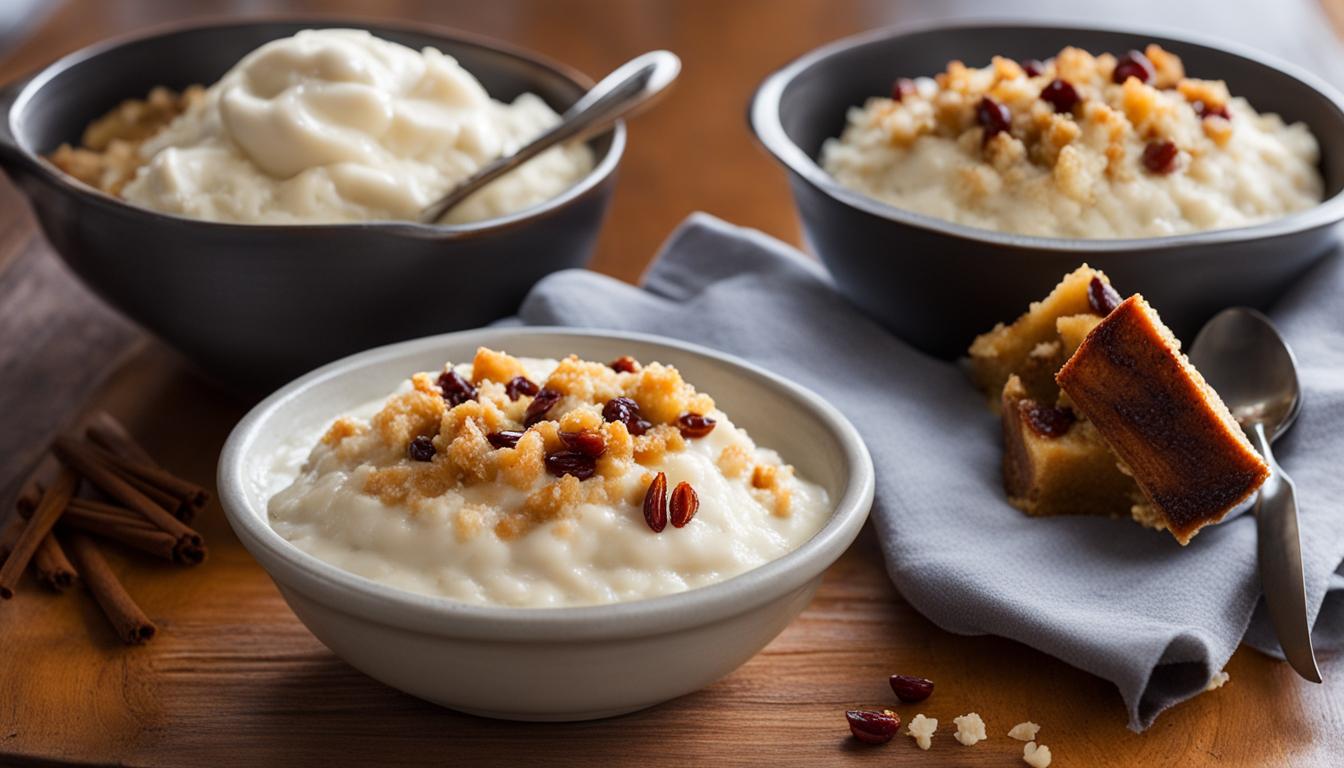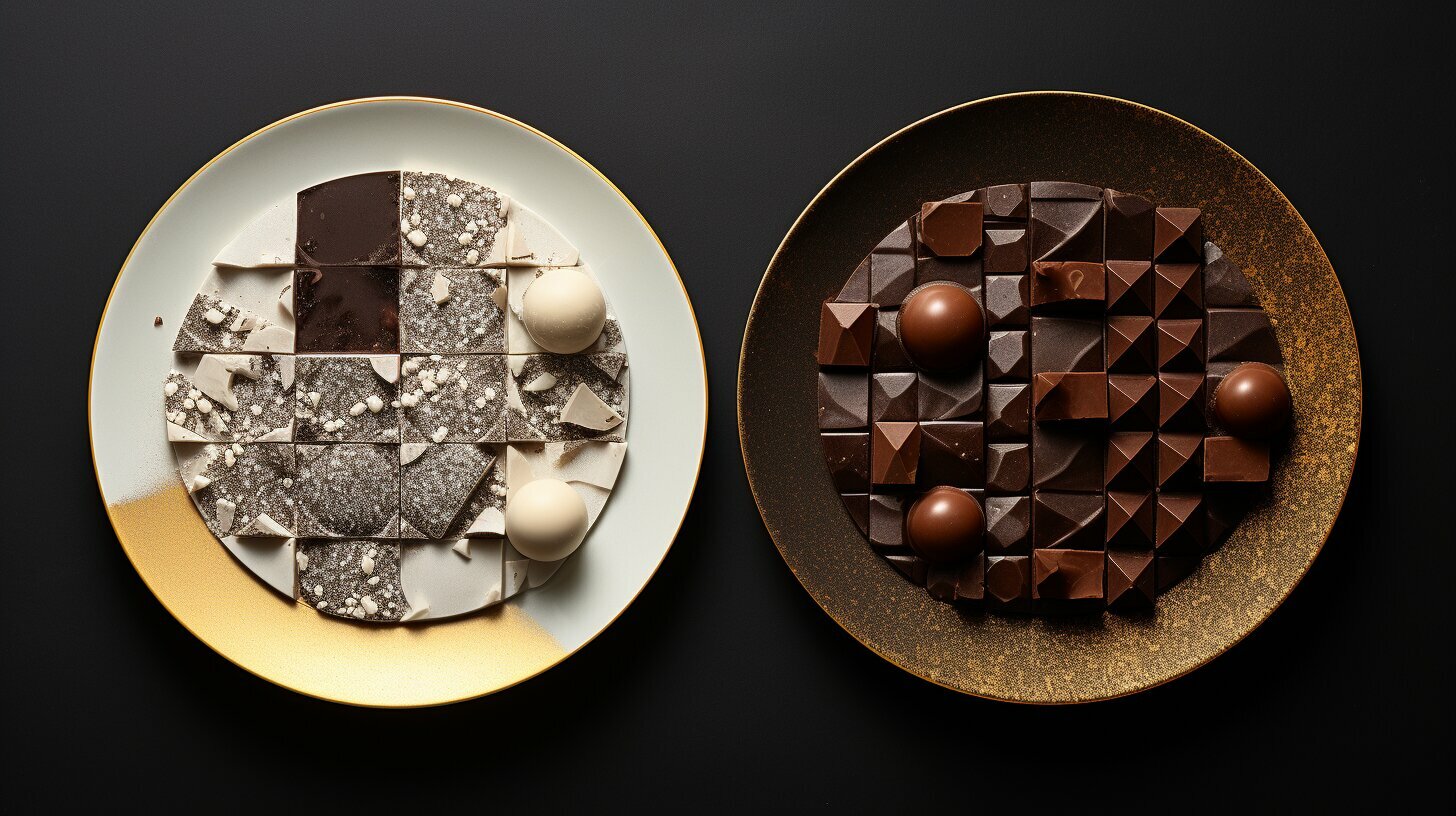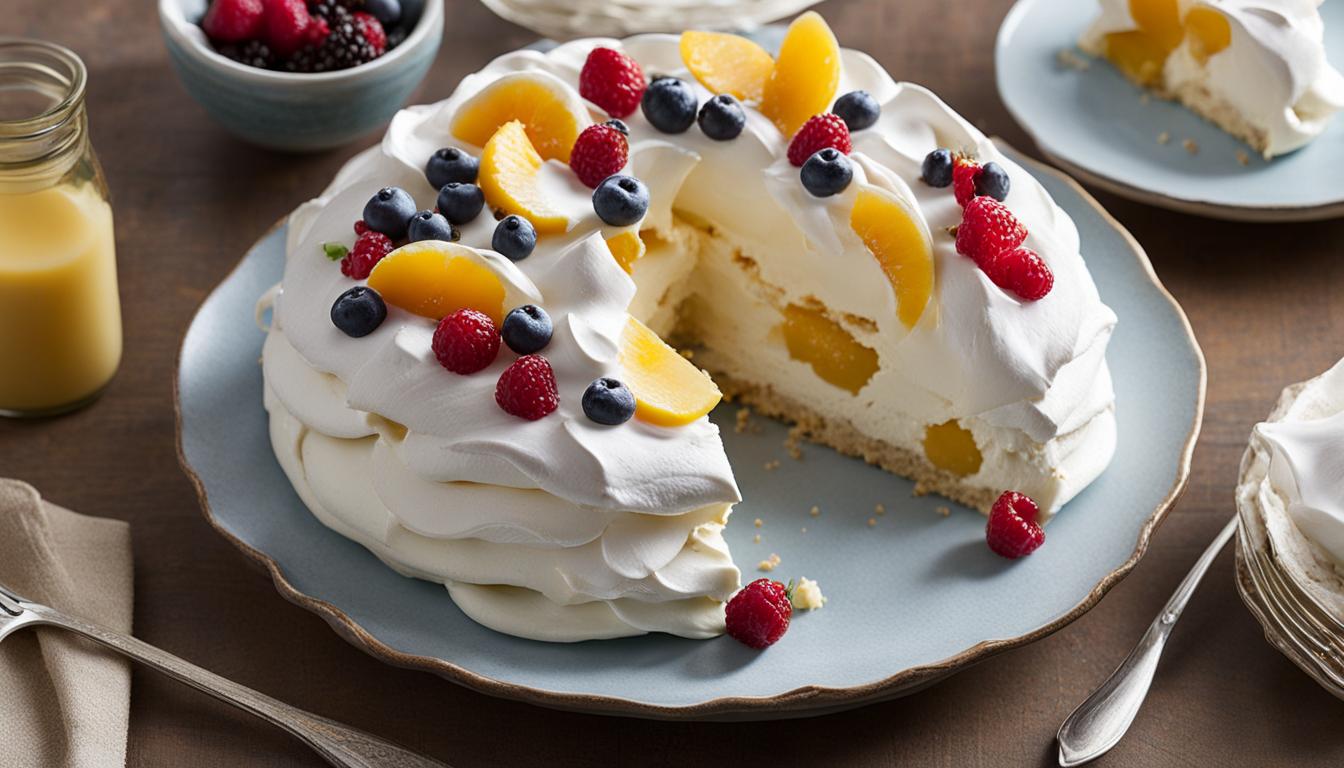Crepes and pancakes may appear similar, but they have distinct differences in size, thickness, and cooking methods. While pancakes are smaller and thicker, crepes are wider and thinner. Pancakes are made by pouring batter into smaller circles that puff up, while crepe batter is spread thinly to the edges of a pan. Crepes are often cooked in a specialized crepe pan with shallow sides for easier flipping.
Key Takeaways:
- Crepes and pancakes differ in size, thickness, and cooking methods.
- Pancakes are smaller and thicker, while crepes are wider and thinner.
- Pancake batter is poured into circles, while crepe batter is spread thinly.
- Crepes are often cooked in a specialized crepe pan.
- Understanding the distinctions between crepes and pancakes enhances culinary knowledge.
Ingredients and Batter Variations
When it comes to crepes and pancakes, one of the key differences lies in the ingredients and batter variations used. While both crepes and pancakes share common ingredients such as eggs, milk, flour, salt, and butter, their batter composition differs in one crucial aspect.
Pancake batter often includes a raising agent like baking powder or baking soda, which gives pancakes their signature fluffy texture. On the other hand, crepe batter does not contain any raising agent, resulting in a thin and flat final product. This distinction in batter composition is what sets crepes apart from pancakes in terms of texture and appearance.
Table: Ingredients and batter variations
| Pancakes | Crepes | |
|---|---|---|
| Ingredients | Eggs, milk, flour, salt, butter, baking powder/soda | Eggs, milk, flour, salt, butter |
| Texture | Thick and fluffy | Thin and flat |
It is the absence of a raising agent in crepe batter that allows for easy rolling or folding with various fillings. The thin and pliable nature of crepes makes them ideal for wrapping around sweet or savory ingredients, creating a versatile culinary canvas.
Cooking Methods and Texture
When it comes to cooking methods and texture, pancakes and crepes display notable disparities. Pancakes are traditionally cooked in small circles on a griddle or skillet, resulting in a thicker and fluffier texture. The batter is poured onto the cooking surface, and as it cooks, it puffs up to create a soft and spongy interior. The edges of pancakes are often slightly crispy, while the center remains tender and moist. This texture is enhanced by the inclusion of a raising agent like baking powder or baking soda in the batter, which helps the pancakes rise and become light and airy.
In contrast, crepes are cooked in a pan or a specially designed crepe pan, with the batter spread thinly to cover the entire surface. This creates a delicate and crispy texture that is distinct from the fluffiness of pancakes. The absence of a raising agent in crepe batter allows for a thinner appearance and a finer texture. Crepes are cooked quickly on high heat, resulting in a slightly golden and lacy exterior. The thinness of crepes makes them pliable and perfect for rolling or folding with various fillings, as they can hold their shape without tearing.
Table: Comparison of Pancake and Crepe Texture
| Pancakes | Crepes | |
|---|---|---|
| Thickness | Thick | Thin |
| Texture | Soft, spongy, slightly crispy edges | Delicate, crispy, lacy exterior |
| Structure | Rises and becomes fluffy | Thin and pliable, perfect for rolling |
As shown in the table above, pancakes have a thicker texture compared to the thin and delicate texture of crepes. The structural differences in cooking methods and batter composition contribute to these contrasting textures. While pancakes are known for their fluffy and soft interiors, crepes offer a unique crispness that adds an enjoyable textural element to the overall eating experience. Understanding these disparities can help you appreciate the distinct qualities of each breakfast treat.
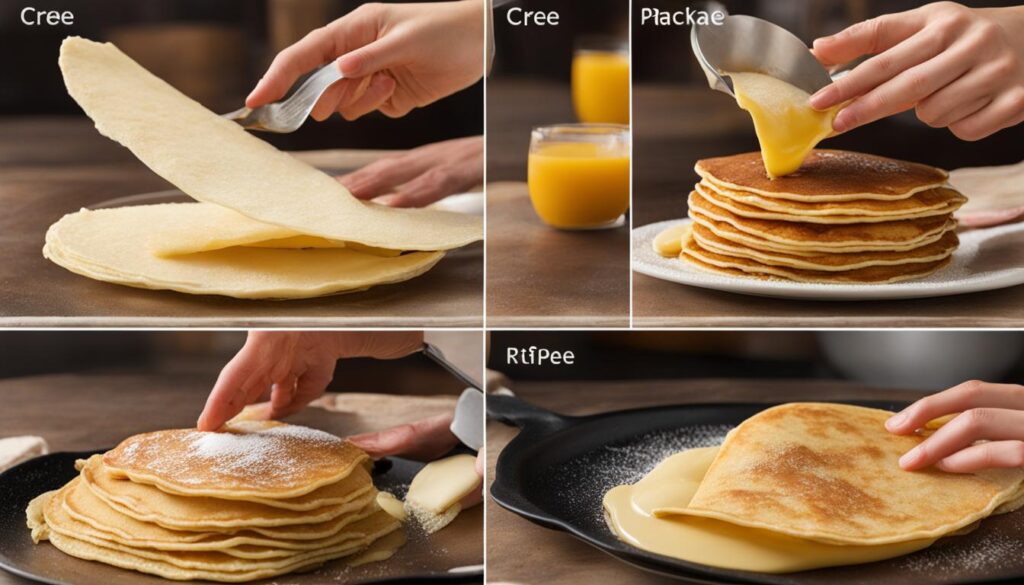
Similarities between Pancakes and Crepes
Although pancakes and crepes have clear differences in size, thickness, and cooking methods, they also share some similarities that make them both versatile and delicious breakfast options. One similarity is their use of similar ingredients in the batter. Both pancakes and crepes commonly include eggs, milk, flour, salt, and butter, resulting in a rich and flavorful base.
Another similarity between pancakes and crepes is their ability to be enjoyed with a wide variety of fillings and toppings. While pancakes are often mixed with fillings like blueberries or chocolate chips and cooked within the batter, crepes’ thin and pliable nature allows for endless possibilities when it comes to fillings. Whether sweet or savory, crepes can be filled with fruits, cheese, or even meats, offering a delightful array of flavor combinations.
Additionally, both pancakes and crepes have a long history and have become popular breakfast choices worldwide. While crepes originated in the Brittany region of France in the 12th century, pancakes have variations in different cultures, with American-style pancakes being thick and fluffy. Over time, both crepes and pancakes have evolved to cater to different preferences and tastes, making them beloved staples in breakfast menus around the world.
| Pancakes | Crepes |
|---|---|
| Thicker and smaller | Thin and larger |
| Cooked in circles on a griddle or skillet | Cooked in a pan or specialized crepe pan |
| Often mixed with fillings and cooked within the batter | Filled with a variety of ingredients |
| Often served with syrup, butter, or fruit | Can be served with sweet or savory fillings and toppings |
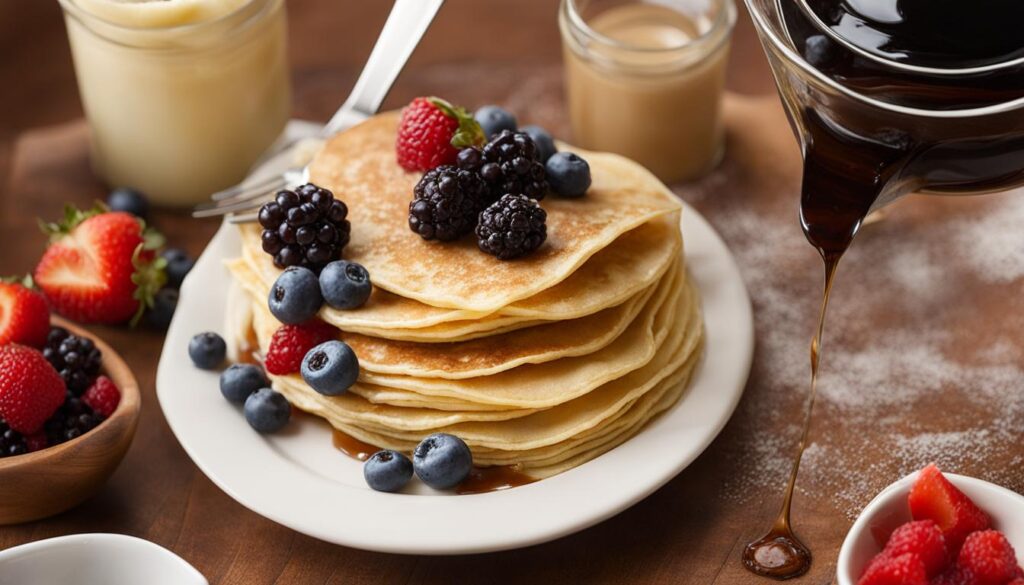
Overall, while pancakes and crepes have their distinct characteristics, they also share similarities that make them enjoyable breakfast options. Whether you prefer the fluffiness of pancakes or the thin and delicate texture of crepes, both can be customized to satisfy your taste buds.
Origin and History
The history of crepes and pancakes is rich with cultural influences and historical developments. Understanding the origin of these beloved breakfast foods provides insights into their unique characteristics and variations.
Crepes, known for their thin and delicate texture, have their roots in the Brittany region of France during the 12th century. During this time, the introduction of buckwheat from Eastern Europe and Asia allowed for the creation of crepes as a light and versatile pastry. The availability of buckwheat flour led to the development of a batter that could be spread thinly and cooked to perfection in a specialized crepe pan.
Pancakes, on the other hand, have a long and diverse history spanning different cultures around the world. In ancient Greece and Rome, pancakes were made from wheat flour and cooked on hot stones. They were often sweetened with honey, fruits, or nuts. As pancakes spread to different regions, variations emerged, such as the thick and fluffy American-style pancakes that are popular today. Each culture put its own spin on pancakes, incorporating local ingredients and flavors.
The Evolution of Pancakes and Crepes
Over time, both crepes and pancakes have evolved to reflect regional tastes and preferences. In America, pancakes became a staple breakfast food, often served with syrup, butter, and various toppings. The use of baking powder or baking soda in pancake batter created a fluffy texture that became synonymous with American pancakes.
Crepes, on the other hand, continued to be cherished in France and other European countries, with both sweet and savory fillings. The thin and pliable nature of crepes allowed for endless possibilities, from the classic Nutella and banana filling to more adventurous combinations like ham and cheese. Crepes also gained popularity as a street food, with vendors offering freshly made crepes with a wide array of fillings.
| Pancakes | Crepes | |
|---|---|---|
| Appearance | Thick and fluffy | Thin and delicate |
| Cooking Method | On a griddle or skillet in circular shapes | In a specialized crepe pan, spread thinly |
| Texture | Soft and fluffy | Delicate and crispy |
| Fillings | Mixed within the batter (e.g., blueberries, chocolate chips) | Sweet or savory fillings (e.g., fruits, cheese, meats) |
While crepes and pancakes may share similar ingredients, such as eggs, milk, flour, and butter, their distinct cooking methods and textures set them apart. Whether you prefer the fluffy goodness of pancakes or the elegance of crepes, both of these breakfast treats offer a delightful start to your day.
Conclusion
After examining the key differences between crepes and pancakes, it is clear that these breakfast favorites have distinct characteristics. Crepes are larger, thinner, and delicately crispy thanks to their specialized cooking method in a crepe pan. On the other hand, pancakes are smaller, thicker, and fluffier, cooked in circles on a griddle.
While both crepes and pancakes are made with similar ingredients, the absence of a raising agent in crepe batter gives them their thin and flat appearance. This unique texture allows for easy rolling or folding with a variety of sweet or savory fillings. In contrast, pancakes are often mixed with fillings and cooked within the batter, resulting in a different taste and mouthfeel.
Understanding the difference between crepes and pancakes is not just about size and texture but also about the cooking methods and cultural origins. Crepes originated in Brittany, France, with their history dating back to the 12th century. Pancakes, on the other hand, have variations in different cultures, with American-style pancakes being thick and fluffy. Both have gained worldwide popularity and offer endless possibilities for delicious breakfast creations.
FAQ
What are the main differences between crepes and pancakes?
Crepes are wider and thinner, while pancakes are smaller and thicker.
How are the cooking methods for crepes and pancakes different?
Pancakes are cooked in smaller circles on a griddle or skillet, while crepes are cooked thinly in a pan or specialized crepe pan.
What ingredients do crepes and pancakes have in common?
Both crepes and pancakes are made with eggs, milk, flour, salt, and butter.
Do crepes and pancakes have different textures?
Yes, pancakes are thicker and fluffier, while crepes are thin and crispy.
Can you fill crepes and pancakes with different fillings?
Yes, pancakes can be mixed with fillings within the batter, while crepes can be filled with sweet or savory ingredients.
What is the history of crepes and pancakes?
Crepes originated in the 12th century in the Brittany region of France, while pancakes have a long history and variations in different cultures.
 Skip to main content
Skip to main content
